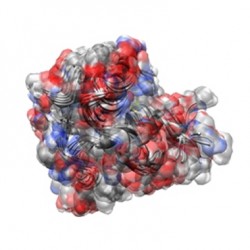By Helen Figueira
October 1, 2010
Time to read: 4 minutes
 Molecular Embryology: stem cells in the placenta
Molecular Embryology: stem cells in the placenta
Pluripotency is the property of stem cells that allows them to become any other cell type. It is the key to regenerative medicine. In nature, pluripotency plays a lead role in development, and its condition is maintained by a host of biochemical signals and feedback pathways, including those involving microRNAs. These noncoding RNAs are transcribed in cell nuclei and are subsequently diced up into small 22-nucleotide units by the aptly-named enzyme Dicer and its accomplice, Drosher. The resulting small units are then able to perform their role in the developmental ballet.
MicroRNAs (miRNAs) block expression of genes post-transcriptionally: by grabbing on to and silencing messenger RNA, they impede translation of genes into proteins. In doing so, they regulate gene expression in both development and disease. While a number of recent studies in mammals have shown the importance of miRNAs in developing embryonic stem cells, little has been known about the role they play in the developing extra-embryonic cells that form the placenta and yolk sac.
Now, research published by members of the CSC’s Molecular Embryology group in collaboration with the Spanish National Centre for Heart Research (CNIC) have shown that the mechanism by which miRNAs maintain developmental potential in embryonic and extra-embryonic cells differs at a fundamental level. By analysing mouse embryos and stem cell lines mutant for Dicer, the protein required to produce miRNAs they showed that whilst in embryonic tissues miRNAS are primarily required to inhibit cell death, in the future placenta and yolk sac they are required to maintain stem cells.
The first cell fate decisions during mammalian development yield three distinct lineages at the time of implantation, when the embryo implants in the womb: the epiblast (in which stem cells are truly pluripotent); the trophectoderm, and the primitive endoderm (in both of which cells are multipotent – with fewer options than the pluripotent cells of the epiblast). It was found in this study that all three lineages are still present in Dicer mutants, suggesting that miRNAs are not required for specification at this early stage of development.
Development of the epiblast was delayed in mutants as compared with controls. Rather than this being due to a slower rate of cell division – in fact, the rate change was negligible – a greater rate of cell death was observed, and this was reflected in the observed elevated levels of the protein Bim, which promotes cell death. Levels of transcription factors involved in maintaining pluripotency in epiblast cells were unaffected in mutants, suggesting that miRNAs do not actively maintain pluripotency at this stage but are primarily involved in inhibiting cell death.
In contrast, it was found that in Dicer mutants, the extra-embryonic cells of the trophoectoderm and primitive endoderm are correctly established, but the cells quickly differentiate, leading to cell cycle arrest. Once this occurs, the cells stop dividing, halting development. In comparison with the cells of the epiblast, transcription factors involved in maintaining pluripotency reduced in the Dicer mutants, indicating that miRNAs in extra-embryonic cells are required for maintaining pluripotency.
While miRNAs have been known to play an important role in embryonic development for a number of years, this study is one of the first to demonstrate their importance in the development of extra-embryonic tissues and to suggest that fundamental differences exist as to how these molecules work in the placenta and yolk sac compared to the embryo .
Reference:
Spruce, T., Pernaute, B., Di-Gregorio, A., Cobb, B. S., Merkenschlager, M., Manzanares, M., Rodriguez, T. A. (2010). An early developmental role for mirnas in the maintenance of extraembryonic stem cells in the mouse embryo. Developmental Cell 19, 207–219.
Link to paper